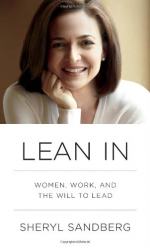
|
| Name: _________________________ | Period: ___________________ |
This test consists of 15 multiple choice questions and 5 short answer questions.
Multiple Choice Questions
1. What social-psychological phenomenon is described with the observation that when members of a group are made aware of a negative stereotype, they are more likely to perform according to that stereotype?
(a) “Fear of the Other.”
(b) “Tokenism.”
(c) “Stereotype threat.”
(d) “Abject racism.”
2. The author asserts in Chapter 4: “It’s a Jungle Gym, Not a Ladder,” “Just as I believe everyone should have a long-term dream, I also believe everyone should have” what?
(a) “A six-month plan.”
(b) “A two-year plan.”
(c) “A one-year plan.”
(d) “An eighteen-month plan.”
3. The author states in Chapter 4: “It’s a Jungle Gym, Not a Ladder” that as of 2010, the average American had how many jobs from the ages of 18 to 46?
(a) 5.
(b) 19.
(c) 11.
(d) 3.
4. According to the author in the Introduction: “Internalizing the Revolution,” American women were paid how much for every dollar that their male counterparts were paid in 1970?
(a) $0.67.
(b) $0.45.
(c) $0.93.
(d) $0.59.
5. Where was the first job that Sheryl Sandberg took after graduating college?
(a) The U.S. Treasury department.
(b) The World Bank.
(c) Yahoo.
(d) Bank of America.
6. What was the author voted as by her senior class, according to the narrative in Chapter 3: “Success and Likeability”?
(a) “Most likely to be a politician.”
(b) “Most likely to end up in jail.”
(c) “Most likely to succeed.”
(d) “Most likely to become famous.”
7. What professional title does Sheryl Sandberg say her brother David holds in Chapter 2: “Sit at the Table”?
(a) Entertainment lawyer.
(b) U.S. Congressman.
(c) Supreme Court Judge.
(d) Pediatric neurosurgeon.
8. How many women and girls does the author say are currently trapped in the sex trade worldwide in the Introduction: “Internalizing the Revolution”?
(a) 4.4 million.
(b) 2.9 million.
(c) 6.7. million.
(d) 1.5 million.
9. What professor at Harvard Business School taught the social marketing classes that Sheryl Sandberg studied during her second year earning her M.B.A.?
(a) Kash Rangan.
(b) Larry Summers.
(c) Rosalind Einhorn.
(d) Tim Geithner.
10. The author notes in Chapter 4: “It’s a Jungle Gym, Not a Ladder” that “an internal report at Hewlett-Packard revealed that women only apply for open jobs if they think they meet” what percent of the criteria listed?
(a) 60%.
(b) 100%.
(c) 80%.
(d) 90%.
11. When the author became pregnant with her first child, she was running the online sales and operations groups for what corporation, as noted in the Introduction: “Internalizing the Revolution”?
(a) Google.
(b) Facebook.
(c) Yahoo.
(d) SurveyMonkey.
12. What well-known CNN journalist credits Willow Bay for mentoring her when she started out, according to the author in Chapter 5: “Are You My Mentor?”
(a) Justin Osofsky.
(b) Erin Burnett.
(c) Omid Kordestani.
(d) Bob Steel.
13. What management committee partner at Goldman Sachs in the late 1990s established a “breakfast or lunch only policy” for employees to create equal access for men and women, according to the author in Chapter 5: “Are You My Mentor?”
(a) Mary Sue Coleman.
(b) Bob Steel.
(c) Omid Kordestani.
(d) Justin Osofsky.
14. Who was the author’s mentor whom she began working for when he was chief economist at the World Bank?
(a) Emily White.
(b) Josh Steiner.
(c) Larry Summers.
(d) Virginia Rometty.
15. Whom does the author say “caught my attention at Facebook years ago when we were getting ready for our first senior-level meeting with the Walt Disney Company” in Chapter 5: “Are You My Mentor?”
(a) Justin Osofsky.
(b) Erin Burnett.
(c) Omid Kordestani.
(d) Bob Steel.
Short Answer Questions
1. Who founded Hearsay Social, described as “a software company that helps businesses manage their social media presence”?
2. Who is described as “president of the Rockefeller Foundation and the first woman to serve as president of an Ivy League university” in Chapter 1: “The Leadership Ambition Gap”?
3. During what decade did women become 50 percent of the college graduates in the United States, according to the author in the Introduction: “Internalizing the Revolution”?
4. Who won the 2011 Nobel Peace Prize for “helping to lead the women’s protests that toppled Liberia’s dictator,” according to the author in the Introduction: “Internalizing the Revolution”?
5. The author states in Chapter 5: “Are You My Mentor?” that “Studies show that mentors select protégés based on” what?
|
This section contains 673 words (approx. 3 pages at 300 words per page) |

|




